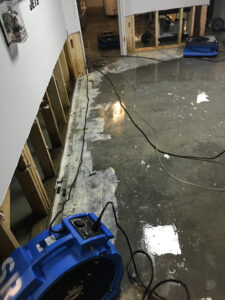
Floods can cause devastating damage to homes and businesses, and cleaning up after a flood can be a challenging and overwhelming task. However, there are certain dos and don’ts that you need to keep in mind when dealing with flood damage cleanup.
Dos of Flood Damage Cleanup:
Turn off electricity and gas: The first thing you should do when cleaning up after a flood is to turn off the electricity and gas supply to your home or business. This will help prevent any potential electrocution or gas leaks.
Wear protective gear: It is essential to wear protective gear, such as rubber boots, gloves, and goggles, when cleaning up after a flood. This will help protect you from any harmful bacteria or chemicals that may be present in the floodwater.
Remove standing water: The longer the water sits, the more damage it can cause. Therefore, it is important to remove any standing water as quickly as possible to minimize the damage. You can use a wet vacuum or pump to remove the water.
Dry out the area: Once you have removed the standing water, you need to dry out the area completely. Use fans, dehumidifiers, and open windows and doors to facilitate air circulation.
Disinfect the area: Floodwater can contain harmful bacteria and chemicals, so it is important to disinfect the affected area thoroughly. You can use a bleach solution or another disinfectant recommended by the EPA.
Don’ts of Flood Damage Cleanup:
Don’t use electrical appliances: Do not use any electrical appliances or tools until the area is completely dry and you have received confirmation from a qualified professional that it is safe to do so.
Don’t enter the floodwater: Do not enter the floodwater unless you are wearing protective gear and have confirmed that the water is not contaminated. Floodwater can be hazardous and may contain harmful bacteria or chemicals.
Don’t throw away items too quickly: It may be tempting to throw away items that have been damaged by floodwater, but some items may be salvageable. Consult with a professional restoration company to determine what can be saved and what needs to be thrown away.
Don’t forget to document the damage: Before you start cleaning up, it is important to document the damage for insurance purposes. Take photos or videos of the affected areas and any damaged items.
Don’t do it alone: Cleaning up after a flood can be a daunting task, and it is important to have help. Consider hiring a professional restoration company to assist with the cleanup and restoration process.
In conclusion, flood damage cleanup can be a difficult and challenging task, but following these dos and don’ts can help you do it safely and effectively. Remember to prioritize safety, wear protective gear, and seek professional help when necessary. By taking the right steps, you can minimize the damage caused by a flood and restore your home or business to its pre-flood condition.
Service Pro Restoration
2001 2nd St SW Rochester MN, 55902
507-229-5554
